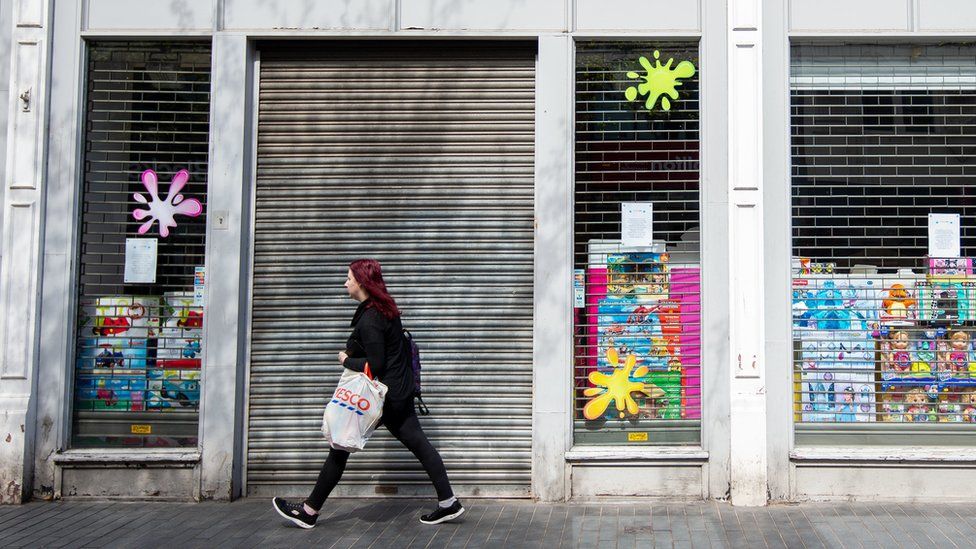Coronavirus: Pressure builds over lockdown transparency
- Published

It's not when, but how.
The UK government has already given five criteria that will have to be met before any of the restrictions on our lives can be eased off.
Bluntly, it's when the disease is spreading at a slow enough rate to be as sure as possible that it won't come roaring back in a second spike, threatening many more thousands of people.
Ministers are confident that they have strong public support for the regime that is in place at the moment, and the polling certainly suggests they are correct.
The tests ministers are happy to talk about will decide when the restrictions might start to be eased.
But it is getting harder for the UK government to keep putting off any discussion of how the lockdown might be removed, even step by step, inch by inch.
That's not just because the opposition is pushing for an exit strategy to be published, a small but vocal group of Conservative MPs are asking for firmer indications, and businesses want to be able to plan while the economy is largely suspended.
It's also because on Thursday Scottish First Minister Nicola Sturgeon started what she called a "public conversation" about what the route out of lockdown might look like, published in black and white in a document.
For good measure, she suggested this was important in order to treat the public like "grown-ups," and that it was "incumbent" on governments to consult the public on the "horrendous decisions" leaders have to make.
As we have discussed here before, the tweaks to limits that could emerge in the coming weeks might see more businesses opening, as long as workers and customers can keep their distance - for example, B&Q has opened some stores this week.
Children might be able to back to school again, but in a limited way, at different times, or with changes to buildings.
- A SIMPLE GUIDE: How do I protect myself?
- AVOIDING CONTACT: The rules on self-isolation and exercise
- WHAT WE DON'T KNOW How to understand the death toll
- TESTING: Can I get tested for coronavirus?
- LOOK-UP TOOL: Check cases in your area
There is the possibility too of different parts of the country emerging from lockdown at varying rates, even though the four administrations have been co-operating closely and are sharing the same government data and science.
The chief scientific adviser for the whole UK, Sir Patrick Vallance, said there could be a two- or three-week gap between the peak in London and other parts of the country.
As ever, some decisions that affect the public are taken at a UK-wide level - and some in Belfast, Edinburgh and Cardiff - but the devolved administrations have power over many of the vital choices here.
Difference in approach
There isn't much that Nicola Sturgeon set out today that you don't hear said in private between ministers and government officials.
And crucially, she did not give any dates.
But there is a marked difference in the approaches taken in Edinburgh and London when it comes to the conversation politicians are having with the public.
UK ministers are understandably concerned about sending mixed messages that could be dangerous, or giving false hope, and the data on which decisions will be taken is evolving day by day.
But with economic and political pressure building, don't be too surprised if hints of steps that could be taken emerge before too long.
P.S. Whatever route we take out of lockdown in any part of the UK relies on a much expanded programme of testing, to emerge before too long.
The government had shied away from focusing on these kinds of widespread testing regimes, with slowing the spread and testing and treating those with the illness the immediate priority.
But on Thursday night Health Secretary Matt Hancock promised that a much bigger testing and tracing programme is on the way - acknowledged for some time as part of the exit strategy, but with the rate of testing under pressure too.
- Published23 April 2020